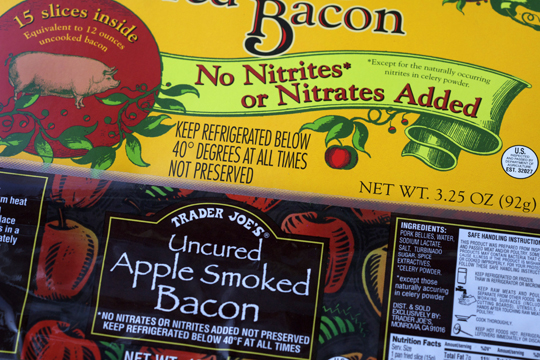Nitrate Free Smallgoods: Good or Bad?

Here at Kaczanowski & Co we like to keep up-to-date with current food trends, and offer education to our customers in relation to these trends when they are relevant to our products.
One of the latest and most frequently asked questions relates to to the use of nitrates in small goods. As a manufacturer of cured meats, and in particular hams and bacon, we feel that is is vital that consumers are aware of the facts regarding the use of nitrates in cured meats. And, in giving these facts, we hope that we can dispel some of the common misconceptions.
Do Kaczanowski smallgoods contain nitrate?
As part of the curing process, Kaczanowski & Co use scientifically controlled amounts of Sodium Nitrate (commonly known as nitrate) in keeping with commercial food standards. Sodium Nitrate is used in the curing process for the following reasons:
- It promotes the colour red, traditionally associated with cured meats.
- It provides the curing flavour.
- It acts as an antioxidant to prevent spoilage.
- Most importantly, it acts as a preservative against harmful bacteria.
How nitrate protects your health
Over a century of scientific research supports the use of nitrate as a cured meat preservative. Sodium Nitrate prevents the growth of dangerous bacteria such as Salmonella and Staphylococcus Aureus, and especially Clostridium Botulinum which causes botulism.
The argument for ‘nitrate free’
While nitrates are beneficial for preventing food-borne bacteria, they have been identified as ‘probably carcinogenic’ when consumed in large quantities. Understandably, any sensible consumer must wonder if buying ‘nitrate free’ cured meats is a safer, healthier alternative.
Why ‘nitrate free’ doesn’t actually mean nitrate free
The manufacturers of supposed ‘organic’ and ‘nitrate free’ cured meats use a very misleading line when it comes to promoting these types of products.
Typically, products promoted as ‘nitrate Free’ or ‘no added nitrate’ are produced using a vegetable extract. (The most common is celery extract. Consumers should check the ingredients to ascertain this). And here’s where it gets confusing. These ingredients do indeed contain Sodium Nitrate as part of their makeup but only need to be labelled as vegetable extract on an ingredients listing.

The issues here are many. Vegetable extracts can contain a variable amount of nitrate, so when adding these the exact concentration in the end product may be far greater than a product produced with a precisely measured amount of Sodium Nitrate. Alternatively, the concentration may be dangerously low – enhancing the risk that harmful bacteria are present.
If a consumers goal is to not be consuming Sodium Nitrate at all, then by consuming products containing vegetable / celery extract they are failing in their goal. If a traditionally cured product and one cured using vegetable extract were laboratory tested, side by side, both would indicate the presence of Sodium Nitrate.
Meats cured with Sodium Nitrate are safe to eat
We believe that the potential long-term health risk of Sodium Nitrate is outweighed by the (much higher, more direct) risk of bacterial poisoning. We are not alone in this view. The Australian Cancer Council has confirmed that the regulated amount of Sodium Nitrate in cured meats can be safely processed by the body, and therefore does not increase the risk of cancer.
So when considering different types of bacon, cured meats or Christmas ham, please be aware that ‘nitrate free’ wording and labelling can be misleading if taken at face value. You might well be paying extra for clever marketing rather than health benefits.
We hope this clears up some of the confusion surrounding this issue.
